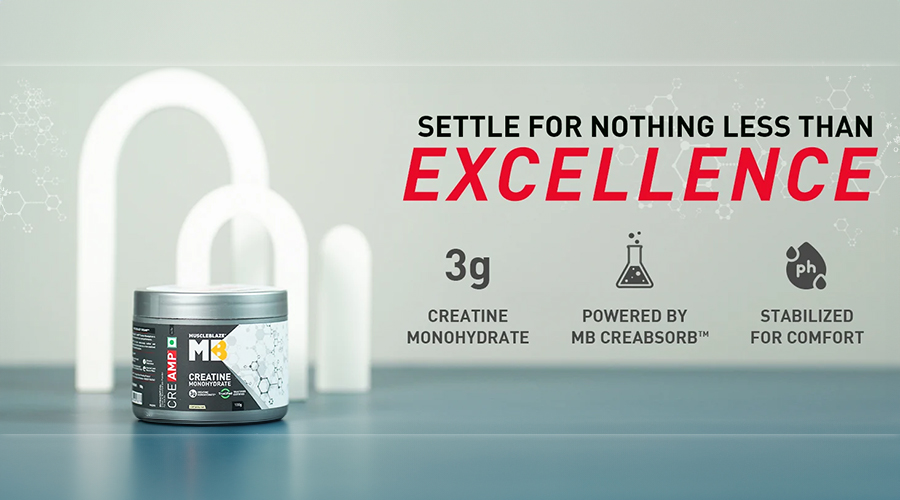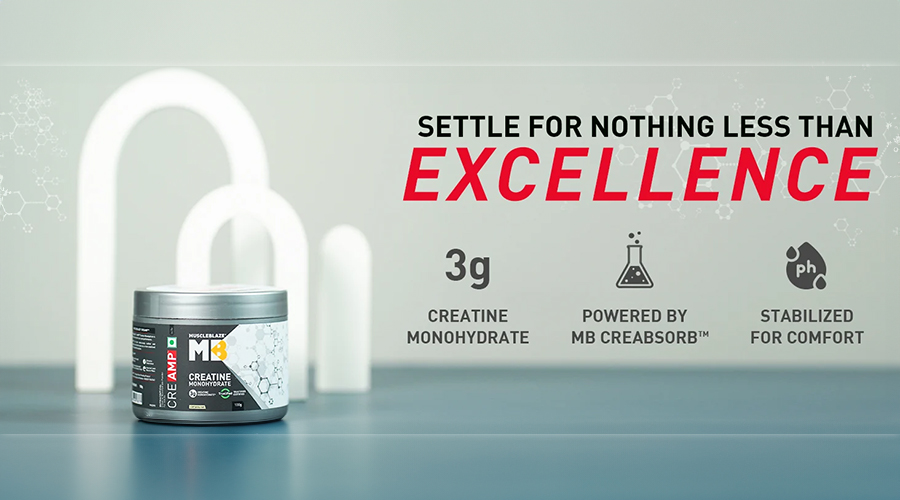Hello Ziddis! Do you hit the gym regularly? We hope you are lifting some weights too, not just running on the treadmill awkwardly! For those who are lifting weights, trying to build lean muscles or just starting to understand how to work out, chances are you may have heard the suggestions of amplifying your workout with fitness supplements! Creatine must have been brought up in this conversation, too. Trying to look more aware, you may have skipped asking what creatine even does. As a beginner, think of us as your helpful gym bro. Let us explain to you why all the gym goers swear by creatine for their regular workouts and how you can benefit from it too.
Creatine for Beginners
Creatine is a compound that is naturally generated in your body and mainly found in your muscles. Your body produces some of it, and the rest is obtained in small amounts from foods like meat and fish. But if you are working out and building muscles while burning fat, this amount of creatine will not be enough. Your body will require some more to help you build lean muscles. This is where creatine supplements come into play. It is one of the most researched and widely used fitness supplements after protein powders. People trust it for increasing their strength, improving muscle recovery, enhancing their performance and building endurance during workouts, especially those that leave you tired, sweating and fulfilled.
In layman’s terms, creatine can help build strength and support your muscles with the energy they require to work out more and grow, as well as recover and bounce back quicker.
Creatine is no rocket science, but if used the right way, it can reap you loads of benefits.
Benefits of Creatine for Beginners
Creatine is extremely trusted and used by gym goers in their fitness journey. Here’s why:
- It boosts strength to help you push harder in the gym and power through during workouts like HIIT.
- It speeds up muscle recovery by reducing fatigue and soreness post a sweaty workout session.
- It increases lean muscle mass, especially when combined with resistance training.
- It improves endurance by supporting better performance, which helps you squeeze in those extra reps and sets.
- An underrated bonus is its positive impact on your cognitive functions.
The reality is it is not a steroid, so one need not worry about its side effects, but neither is it a magic pill, so trying to check its effect now and then would only end up disappointing you. You must use it consistently to support your training in the right way.
How to Take Creatine
As we said, understanding creatine is no rocket science, nor is taking it. Here is how to take creatine for the most optimum, safe and effective results:
1. During your loading phase:
- Take 20 grams per day, ideally split into 4 doses of 5 grams each for 5 to 7 days.
- Post these 7 days, a maintenance dose of 3 to 5 grams per day should be followed.
2. Without the loading phase:
- Simply take 3 to 5 grams daily from day one.
- You will see gradual results.

Best Time to Take Creatine
Creatine intake is flexible. You do not require a strict schedule or stick to a timely. But what might help is:
- Creatine as a pre-workout works well when paired with a protein shake or accompanied by protein bars.
- Creatine, as a post-workout supplement, allows your muscles can absorb nutrients better, which can help in muscle recovery.
The key is consistency, not timing, so pick a time that works for you and you remember to have your creatine dose daily.
How Does Creatine Help in a Workout?
Even if you are a beginner and are still getting acquainted with the gym life, creatine can help. Here is how:
- During HIIT, your body uses ATP for quick energy.
- ATP reserves can run out fast.
- Creatine can help replenish ATP.
- This gives you extra fuel.
- You can push through for a few extra or final reps.
- If you feel like giving up after the 9th rep, creatine gives your body that extra charge to hit a 10.
Read Also: Creatine for Women: Is it Safe and Effective for Building Muscle?
Tips for Using Creatine the Best Way
- Stay consistent by taking creatine every day
- Hydrate yourself well
- Pair it with the right workouts, like resistance or weight training
- Choose the correct type of creatine, like creatine monohydrate is well-researched and effective. You can start with Creatine Monohydrate by MuscleBlaze.
- Be patient because it may take 2 to 4 weeks to see results.
- You can have it with gainers if you want to bulk up too.
Takeaway
Creatine is well-researched, safe and effective. We hope you have understood how creatine helps you in a beginner-friendly way. When taken the right way, creatine can help you train harder, recover faster, and get better! We know we say this about everything related to fitness, but really the key is just to start small, stay consistent and let your body show you how it feels when you take care of yourself and listen to your body’s needs.







 100% Safe & Secure payments:
100% Safe & Secure payments:




